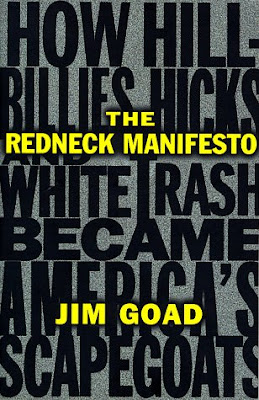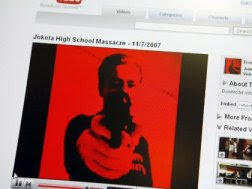>
Hans Blix
>
>You know about Top Gear? I hadn’t even heard about that show until I stumbled upon these clips on YouTube a couple of days ago, but apparently there’s millions of trillions watching it, and it’s one of the most pirated shows ever. I never watch TV, so maybe that’s why I’m left in the cold when it comes to such high quality stuff as Top Gear.
Mind you, I have seen nothing but these three clips, so I might be totally out of it here, but I found them really funny. Three old goofballs trying to pimp their rides. So very much anti-bling-bling-MTV I just had to like it.
And I can relate to that evil shit that is caravan holidays as well. I was born and bred in a trailer park. Well, not really, but I’ve sure spent my fair deal of darkness on the road and in them bloody caravans. I think I hated every minute. The worst thing was going abroad and missing Rockbox.
Check these clips from start to finish, and then tell me I’m wierd. I find them funny. Am I getting old?
>These videos have been floating around on YouTube for a while now, and they are really too good to be missed. This StSanders fella who makes these “shreds”-videos is a genius at what he does. I still laugh my ass off to the Metallica video, and I’ve watched it twenty times already.
>
What will Ahmadinejad’s outspokenness ultimately lead to? I must say I’m very fascinated with what he has to say. I whole heartily agree with his deep critique against Zionism, and his personal letter to Bush was just… wow! What at least seems to be honesty is something rarely shown in politics today. Perhaps I’m just misguided… Time shall tell.
Until then, feel free to read this interview and his letter to Bush, and by all means, please watch this interview (please bear with the embarrassing translator idiot and his fake ass broken English, that’s of course just them false Americans deliberately trying to make Ahmadinejad look stupid):
>
Jim Goad writes a great deal about racism and pride in The Redneck Manifesto. Of course, it’s a great deal of fun since Goad is a funny guy, but there’s also a great deal of truth in what he says and I think it’s about time we realised that. A lot of his ramblings work fine as general truths as well.
Since mainstream media of today tend to hide from the most obvious inconvenient truths, we’re forced to find reliable information from other sources. By studying uncensored, clear-thinking individuals who dare to oppose the system we’ve come a long way already.
“Societies organize themselves around taboos as if they were religious shrines, and racism is currently no-no numero uno. People, especially my Caucasian kith ‘n’ kin, are flush-faced and shamed about race like they used to be about sex. Racism is the new porno, rated Triple Malcolm XXX. But even though people hate to think about it, they can’t seem to stop. The flashing marquee is just too alluring. When you make something supremely untouchable, you lend it a power it wouldn’t ordinarly have. It almost tempts the more malevolent souls among us to shout out dirty words as if we had Tourette’s syndrome.
…
Sensitivity often rises in inverse proportion to logic. Here’s the point that the lunacy has reached. If a black person or a Jew says that white Europeans were involved in the slave trade (which is true), no one’s upset. But if a black or white person says Jews were involved in the slave trade (which is also true), he’s an oven-building anti-Semite. And if a white European male says African warrior kings were involved in the slave trade (which is also true), he’s a bloated racist warthog. Woo-woo, dat’s sensible. Maybe we’ll have equality when we learn to spread the blame around.
…
This country’s racial.pride policy has always been separate and unequal. Ethnic pride used to be only for whites. Now it’s only for nonwhites. Black pride, like all hues of pride, isn’t inherently good or bad; it’s how it’s used. What’s sociologically curious is that it’s flourishing a climate where ethnic self-esteem is prohibited for whites. Society seems unequipped to deal with UNILATERAL pride. The moment when white supremacy crashed to the ground, black supremacy seemed to rise from the flames. What is this social mechanism that allows for pride in one group only at the expense of pride in another? Ultimately, I think that ethnic pride is dumb. I take credit only for what I’ve done, not what “my people” have done. Ethnic pride reminds me of flabby sport-fan couch potatoes who feel responsible when their team wins. If I were king, I’d get rid of pride altogether.”
>Originally posted November 13, 2007.

On April 17th 2007 I wrote the Tool and Die-post about the Virginia Tech Massacre, a school shooting in the USA. I quote myself:
30+ killed this time. And still people ask the same stupid question: Why does this always happen in the United States of America – the land of the free, the biggest and best democracy in the world?
And now the madness has arrived in good old Europe. Actually, school shootings have happened outside the US of A before, for example in Scotland, Canada, Germany… But let’s take a look at a time line of recent world wide school shootings (there’s even a term for this shit, how disgusting…):
http://www.infoplease.com/ipa/A0777958.html
Since 1996 there’s been over 50 school shootings, most of them in the USA, and since the reasons for these shootings are embedded in the sick society we live in, is it safe to say that USA breeds the sickest society of them all? Maybe so. Over there you have metal detectors at the school door, surveillance cameras, bookbag searches and bar-coded ID badges. Instead of gun control they’re talking about gun rights. Is this what the future holds in its bloody hands for Europe?

Pekka-Eric Auvinen got one thing right, quoted from his Natural Selector’s Manifesto:
So far, so good.
I agree one hundred percent – in theory. But the way he went out together with the people that died is not something I honour at all. Not the least bit. To me the whole thing was just pointless and nothing but a tragedy for those closely related to what happened.
The following text is quoted from Pekka-Erics “Attack Information”-document, which I believe was available on the Internet along with his YouTube-videos long before the actual action began:
—
ATTACK INFORMATION
Event: Jokela High School Massacre.
Targets: Jokelan Lukio (High School Of Jokela), students and faculty, society, humanity, human race.
Date: 11/7/2007.
Attack Type: Mass murder, political terrorism (altough I choosed the school as target, my motives for the attack are political and much much deeper and therefore I don’t want this to be called only as “school shooting”).
Location: Jokela, Tuusula, Finland.
Perpetrator’s name: Pekka-Eric Auvinen (aka NaturalSelector89, Natural Selector, Sturmgeist89 and Sturmgeist). I also use pseydonym Eric von Auffoin internationally.
Weapons: Semi-automatic .22 Sig Sauer Mosquito pistol.
—
Information travels with great speed on the Internet, so I believe quite a lot of folks knew what he was up to. No one seemed to care then. Now there’s a whole different story.
How many thrive on these sickening and sad mass murders – especially during the time it was broadcasted live all over the world – without even reflecting on what’s actually causing these killings and breeding these murderers and their convictions? By browsing the Internet reading various discussions and articles in mass media and alternative forums I’d say there’s a lot of people out there doing just that – thriving on society’s sickness without any reflection whatsoever.
Is this the new ethics? The new moral?

To me it’s quite obvious that Auvinen was a product of a society that once again failed miserably. He was the victim, not the hero.
Weblog Oskorei writes that an intelligent choice for Auvinen would’ve been to engage in politics. I totally agree. I believe in the power of the small man using his mind, spirit and words to make a change. Killing a bunch of people – including yourself – is to surrender to their sickness. “But hey, you think writing a blog and joining a cause on Facebook will make a change?”, I hear you moan. I sure as hell do. I believe in understanding the big picture via alternative media, small scale activism, awareness, resistance and articulating visions. That’s my way of escaping indoctrination. Internet is a great place for this. Use it wisely.
I’d like to end this post by quoting the great mind of Nikanor Teratologen who wrote this as a comment to the Virginia Tech Massacre in Tidningen Kulturen:
Det är förstås möjligt att Cho Seung-Hui hade blivit ”galen”, han var av allt att döma mycket depressiv och kanske led av någon autistisk störning: men är inte också det samhälle han levde i grundläggande sinnesrubbat, ett ormgropskved för utspottandet av gravt störda men smart marknadsanpassade individer? Den sociala struktur, mentalitet och livskultur han desperat men förgäves försökte anpassa sig till är inte frisk och inte människovärdig – civilisationen måste förändras för att händelser likt den på Virginia Tech inte ska äga rum.
…
Det går inte att genom någon sorts överhetskampanjer eller mer omfattande kontroll-, övervaknings-, angivar- och stigmatiseringssystem heltäckande skydda skolor, arbetsplatser, offentliga platser överhuvudtaget mot enskildas planlagda och sedan lössläppta mordiska hämndraseri. Förändringarna måste inledas på individplanet, i människors beteende och attityder mot varandra. Man bör helt enkelt inte kränka och bete sig illa mot andra varelser på jorden. Allt är ett, sammanvävt, förgängligt.
…
Den grandiost sadomasochistiska och Kristusyrande självbilden som tröstande och upplyftande suggererar existensen av en andligt besläktad krets att höra hemma i och betyda något avgörande för har, imaginärt, förintat den invalidiserande känslan av att inte duga, inte räknas, inte vara älskad och inte tillåtas hysa känslor, inte finnas till, – någon kurskamrat har berättat att när studenterna skulle introducera sig själva i klassen genom att skriva sina namn på lappar var Chos reaktion att rita ett stort frågetecken. Fler människor borde kanske försöka förstå det frågetecknets djupare innebörd och ställa sig frågan om inte deras egna liv också är förtvivlat meningslösa frågetecken skrivna i Intet.